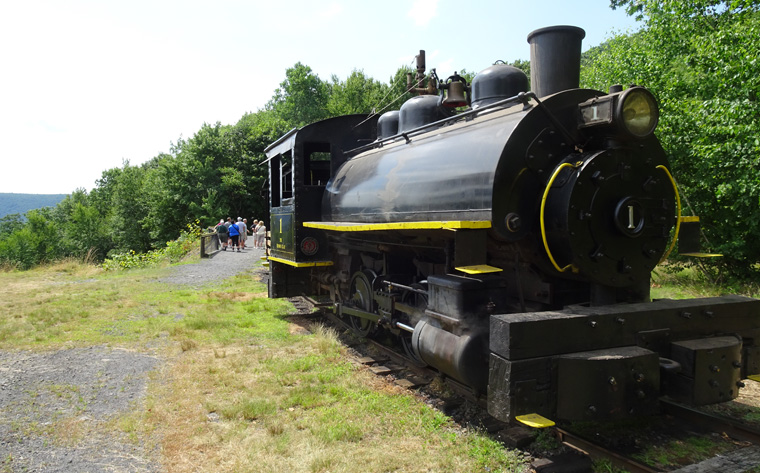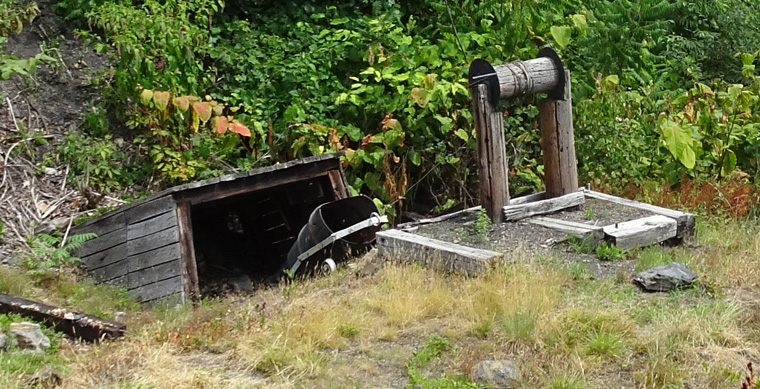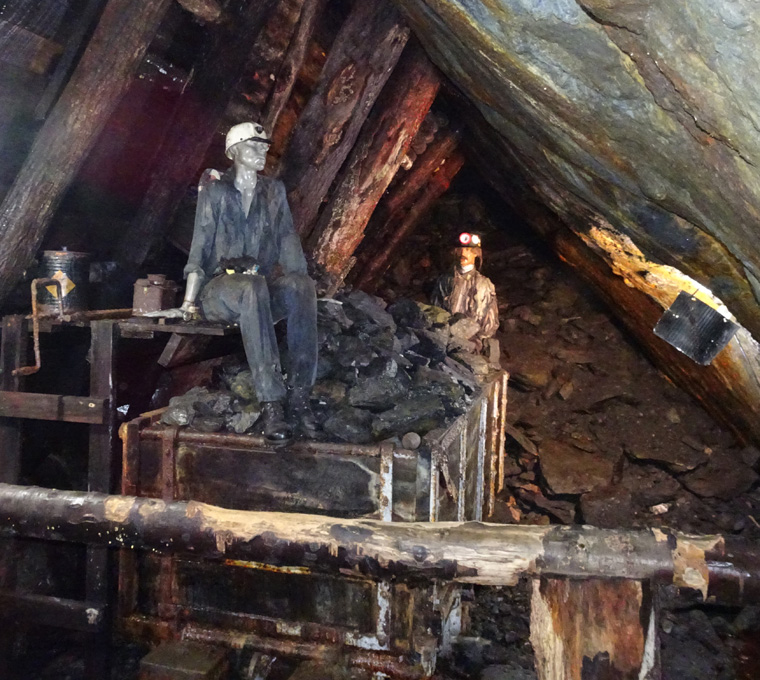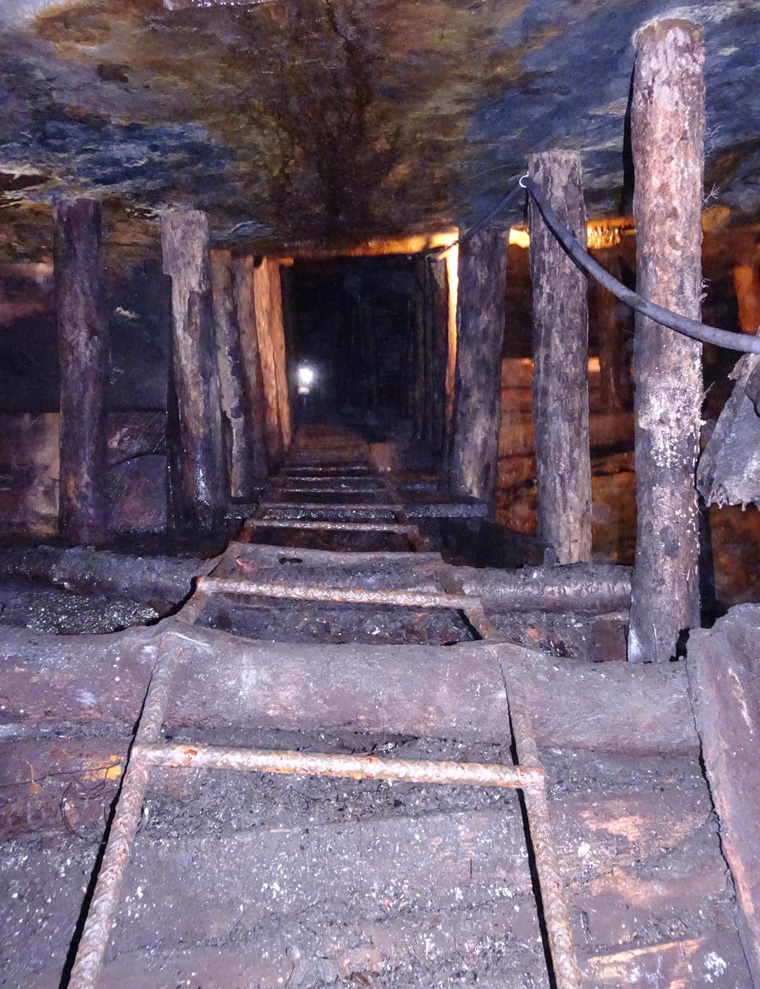Friday, July 15 2022
The drive today was the scenic route from Selinsgrove to Scranton, PA. This was almost all enjoyable two lane roads through forests, farmland and small communities in hilly countryside.
My back is still not normal but it is a lot less painful than yesterday. This is good as I spent time on the bumpiest steam train ride I have ever endured as part of an anthracite mine tour.
This part of Pennsylvania is known for its anthracite – the hard, relatively clean-burning coal that is more than 90% carbon. It is estimated that about 75% of the world’s anthracite is located here. Seams of anthracite up to 2,000 feet (610 m) thick are found here but they have been thrust up at angles of about 60° to the horizontal and often reach the surface so most of the mines did not require vertical shafts. They are strip mined at the surface or use horizontal (drift) tunnels to access the coal. My only stop of the day was at the Pioneer Tunnel Mine in Ashland, PA to see how both types of mining were performed.
 This narrow gauge train was used to haul coal from the strip mines at the surface to the main line for distribution. Today it takes tourists on a short journey around the mountain to see the strip mining area. It is over 90 years old and the carriage wheels are definitely not true circles – hence the bumpy ride.
This narrow gauge train was used to haul coal from the strip mines at the surface to the main line for distribution. Today it takes tourists on a short journey around the mountain to see the strip mining area. It is over 90 years old and the carriage wheels are definitely not true circles – hence the bumpy ride.
 Land owners here did not own the rights to the coal under their land but many would dig “bootlegger” shafts and lower one of the family in the bucket into the shaft to dig out anthracite illegally.
Land owners here did not own the rights to the coal under their land but many would dig “bootlegger” shafts and lower one of the family in the bucket into the shaft to dig out anthracite illegally.
In addition to the train tour there was also a tour into a drift tunnel.
This video does not show much but gives you an idea of what the journey into the drift tunnel was like. At the time it was in use there was no electric lighting in the mine, just the light from small helmet mounted acetylene flames in carbide lamps.
 The sloping rock face on the right shows the angle at which the seams ran. The anthracite would be dug out and put into carts in side tunnels that ran back to the drift tunnel. The carts would be hauled by donkeys.
The sloping rock face on the right shows the angle at which the seams ran. The anthracite would be dug out and put into carts in side tunnels that ran back to the drift tunnel. The carts would be hauled by donkeys.
 This is a view looking up an air shaft to the surface. If there was a problem, such as methane collecting or flooding, the miners would have to climb this rough ladder to escape,
This is a view looking up an air shaft to the surface. If there was a problem, such as methane collecting or flooding, the miners would have to climb this rough ladder to escape,

I’m reminded of my trip on the Leighton Buzzard Light Railway and our trip down the Luxembourg National Mining Museum.